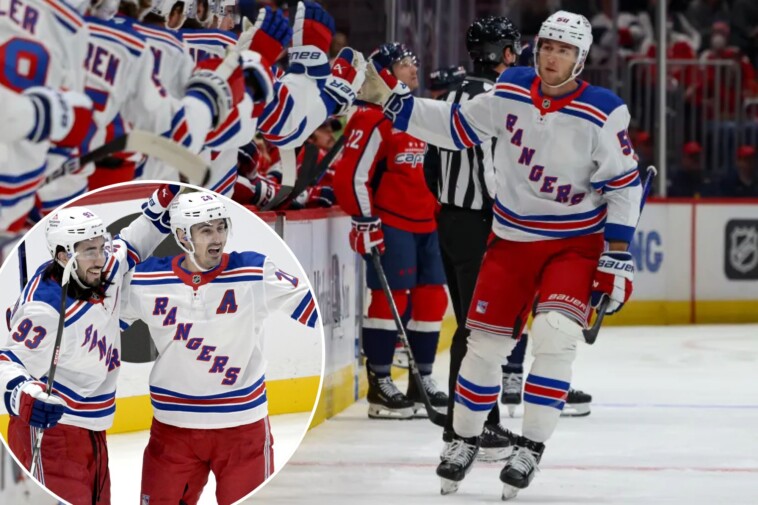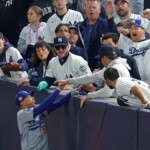There is good reason for the Rangers third line receiving more ice time than the first unit in seven of the first nine games of the 2024-25 season.
The proof is in the metrics that Will Cuylle, Filip Chytil and Kaapo Kakko have simply been a more effective trio than Chris Kreider, Mika Zibanejad and Reilly Smith. They’ve been a possession machine, almost always in the offensive zone and have still remained defensively sound with zero five-on-five goals against so far.
The team’s depth is all folks will talk about when the Rangers are winning. How beneficial it is to have such a strong third line that can alleviate scoring pressure off the top six.
When the Rangers are losing, however, the imbalance of ice time between the first and third units becomes a cause for concern. If the Rangers can’t rely on their No. 1 center and Co. to produce and perform, is it even a top line?
“Often, I’d say, they draw the tougher matchup,” head coach Peter Laviolette said of the Kreider-Zibanejad-Smith unit before the Rangers’ 5-3 loss to the Capitals in D.C. Tuesday night. “I think they’re looking for more [offensively], but they talk about it a lot, they watch a lot of video, and they’re all kind of students of the game. They want to get better.”
The Blueshirts have lost two of their last three to the more formidable opponents on their schedule — the Panthers and the Capitals — through the first month of the season.
Cuylle, Chytil and Kakko were again deployed as though they were the second line, logging 12:19 of ice time as a line in comparison to the first unit’s 8:58 against Washington. What has widely been considered to be the Rangers’ most effective trio since their inception 11 games into last season — Artemi Panarin-Vincent Trocheck-Alexis Lafreniere — led with 13:55 of ice time.
Kreider, Zibanejad and Smith were beaten 8-3 in attempts and on the wrong end of a 4-2 edge in high-danger chances, according to Natural Stat Trick.
They were on the ice for one goal against as a unit, but Kreider and Zibanejad both finished minus-three Tuesday night. Perhaps the most concerning stat is how the line combined for only two even-strength shots on goal, and neither belonged to Zibanejad.
The fact of the matter: Zibanejad has recorded one shot or fewer in a game five times already this season.
That has certainly played a role in Laviolette leaning more on Cuylle, Chytil and Kakko, who were responsible for tying the game up, 1-1, in the first period in D.C. Kakko scooped up a puck off the faceoff, carried it into the zone and backhanded it to Cuylle, who buried his third goal of the season and second in as many games.
Read the expert take on the Blueshirts
Sign up for Larry Brooks’ Inside the Rangers, a weekly Sports+ exclusive.
Thank you
Cuylle would have five goals if not for opposing coach’s challenges, but the 22-year-old’s perseverance has never wavered. Even when he had one taken away against the Ducks, Cuylle scored the very next goal.
Kakko highlighted the physicality that Cuylle brings to their line, noting that he is strong around the net and gives the line some extra time to create.
Cuylle actually leads the Rangers with 39 hits, which is 11 more than the next closest Ranger (Trocheck’s 28). Behind only the Red Wings’ Moritz Seider, the Predators’ Jeremy Lauzon and the Canucks’ Kiefer Sherwood, Cuylle is ranked fourth in the NHL in hits.
“It’s just the natural progression of physical strength, to be able to understand the game mentally a little bit better, to train a little bit differently, to eat a little bit differently — all the things that you learn when you become a pro,” Laviolette said of Cuylle’s evolution recently. “You should get better. There should be an elevation to your game. I definitely see that with him this year. … There’s a maturity to his game, I think, from this year to last year.”





